Man Made Fibres - Advantages and Disadvantages, Classification, FAQs
Man-made fibres or human-made fibres are those fibres which are synthesised by humans in the laboratory, they do not occur naturally their structure, properties and chemical compositions are altered significantly during the manufacturing process. Man-made fibres are made by spun and woven for the production of a large number of consumer and industrial products such as garments, home furnishings etc. Man-made fibres examples are rayon, nylon, polyester fibres etc.
NEET 2025: Mock Test Series | Syllabus | High Scoring Topics | PYQs
JEE Main: Study Materials | High Scoring Topics | Preparation Guide
JEE Main: Syllabus | Sample Papers | Mock Tests | PYQs
- Natural Fibres
- Types of Natural Fibres
- Classification of Man-made Fibres
- Synthetic Fibres
- What are Regenerated Fibres?
- Advantages of Man-made Fibres
- Disadvantages of Man-made Fibres
In this article, we cover the concept of man-made fibre. which is a very important chapter of Polymers from the board exam point of view and also for the JEE Mains Exam, NEET Exam and many other entrance exams like SRMJEE, BITSAT, WBJEE, BCECE, and more
Natural Fibres
Natural fibres are obtained from natural sources such as plants, animals and mineral sources which are available to mankind. Fibres that are obtained from plants are called plant fibres. Cellulose fibres are obtained from plant fibres. Examples of natural plant fibres are cotton which is obtained from cotton plants. Animal fibres are those which are naturally available from animals. Protein fibres are obtained from animal fibres. Examples are wool which is obtained from sheep and silk is commonly obtained from the cocoons of the silkworm. Natural fabrics are used from natural fibres.
Also read -
| NCERT Solutions for Class 11 Chemistry |
| NCERT Solutions for Class 12 Chemistry |
| NCERT Solutions for All Subjects |
Types of Natural Fibres
These natural fibres are obtained from raw materials from natural sources. The types of natural fibres are as follows:
Cotton
It is a soft fibre. Cotton is made up from the cotton plant. It is grown and is picked up in the form of a white fluffy ball (known as a boll) from around the seeds of the plant. Each boll consists of about 20,000 staple fibres. These are spun into yarn and are then woven into cotton fabrics. These fibres can be mixed with other fibres to make fabrics varying from lightweight voiles to heavier canvases. The unique properties of cotton are due to the presence of cellulose which gives it strength, durability and absorbency. It is mostly preferred in hot and humid climates as it can absorb a good amount of sweat from the body.
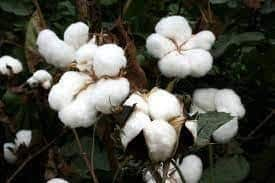
Jute
It is one of the cheapest fibres available. They are obtained from the jute plant. Depending on the climate and region the properties of the jute can be varied. They are hard, long fibre and are environment friendly. They are good insulating fibres and have low thermal conductivity. These fibres can easily blend with other fibres.
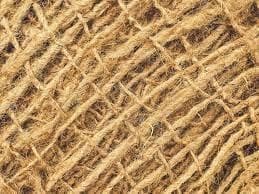
Silk
It is obtained from the cocoon of silkworm and is a natural proteins fibre. It has good absorbent quality and the low conductivity of silk makes it cool and highly desirable to wear in summer and warm in winter. It is made up of continuous filaments rather than staple fibres and is one of the strongest natural fibres. Silk is also used for making parachutes.
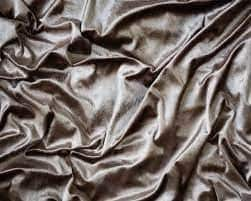
Wool
Wool is a natural fibre obtained from woolly animals like sheep. These fibres contain proteins units in their molecules. It is spun into long strands and is then woven into fabrics. They have the ability to trap air and keep warm which also makes it a good insulating fibre. They are flame-resistant and very soft. They are used for making blankets, carpets etc.
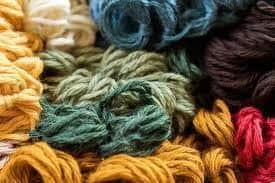
Classification of Man-made Fibres
Man-made fibres are different from natural fibres. Their properties, structure and chemical compositions are modified during the chemical processes. Man-made fibres can be generally classified as follows:
Synthetic Fibres
Regenerated Fibres
Synthetic Fibres
Synthetic fibres are synthesised from chemical processes. Man-made synthetic fibres are also called artificial fibres. These synthetic fibres were first developed in the nineteenth century for the production of stronger fibres that can withstand high pressure. Now, these man-made fibres have wide-extended applications other than textiles. Examples of synthetic fibres are nylon, acrylic, polyester etc.
Types of Synthetic Fibres
They are produced by chemical processes from man-made raw materials. The various types of synthetic fibres are as follows:
Nylon
Nylon was discovered in the 1930’s. It was the first man-made fibre. Nylon is generally termed a family of synthetic polymers called linear polyamides. One major type of nylon is Nylon 6, 6 by the combination of two organic compounds. It is strong and has good abrasion resistance. The strength-to-weight ratio of nylon is good which shows that it is strong and lightweight at the same time. It is a water-resistant fibre and hence used for the manufacture of waterproof clothing and umbrellas.
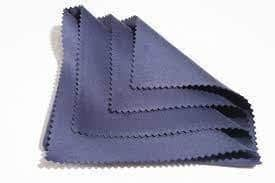
Polyester
The most widely used man-made fibres are Polyester. It was invented in the year 1938 in the United Kingdom. They show properties similar to nylon. These polyester fibres are synthesised from a chemical compound known as ethylene glycol. These fibres do not absorb moisture and they dry quickly. They can be blended with other fibres such as cotton or wool. These fibres are strong and hence used in sportswear and performance clothing.
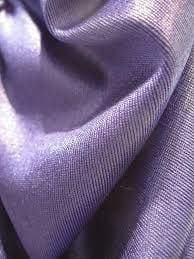
Acrylic
They are synthetic fibres and are used as cheaper wool. They are manufactured as staple fibres and come in two forms: dry-spun and wet-spun. They show many advantages such as crease resistance and resistance to sunlight fading.
What are Regenerated Fibres?
These are semi-synthetic fibres that are made from raw materials having long-chain polymer structures. They are modified and partially degraded during the chemical processes. A regenerated fibre example is rayon. These regenerated fibres are made from cellulose polymers that are naturally occurring in cotton, wood, hemp, flax etc. Semi-synthetic fibre is also known as regenerated fibres or regenerated synthetic fibres.
Semi-synthetic fibres mostly cellulose regenerated fibres. The cellulose is first converted into a pure form of viscous mass and is then converted into fibres by extrusion through spinnerets. The first man-made regenerated fibres are rayon and acetate.
Rayon
It was invented by a French chemist Chardonnet and was first called Chardonnet silk and later named rayon. Why rayon is called regenerated fibres because it is a semi-synthetic material which is manufactured from a cellulose base. Cellulose is obtained from wood pulp and is made by the combination of carbon disulphide and sodium hydroxide . It is used as an imitation of cotton and silk. Several other man-made fibres are used for non-textile purposes. These man-made fibres are mixed with natural fibres to form advanced fibres which exhibit the characteristics of both fibres.
Rayon meaning in hindi is ‘reyaan’.
Advantages of Man-made Fibres
Man-made fibres are usually preferred to natural fibres due to their distinct characteristics such as high strength and low making cost etc. In the twenty-first century, a major part of the textile industry uses man-made fibres because of their various advantages. These include low cost, higher strength, high manufacturing profits etc. Some advantages of man-made fibres are described as follows:
High strength: Man-made fibres are strong and they can take up heavy things easily.
Retains their original shape: Man-made fibres retain their original shape so they can be easily washed and worn.
Elastic: They are easily stretched out.
Soft: They are generally soft and are used for clothing purposes.
Low cost: The man-made fibres are generally cheaper compared to natural fibres.
Colour: Colours can be easily incorporated into man-made fibres during their production.
They are lightweight materials.
Easy manufacturing: Natural fibres undergo long processes while man-made fibres can be produced in factories in less time.
Disadvantages of Man-made Fibres
Man-made fibres do not absorb moisture and traps heat in our bodies.
Some man-made fibres cause skin allergies due to their dermatological actions.
Man-made fibre fails to absorb perspiration and hence the wearer feels discomfort during hot climates.
Also, read-
Frequently Asked Questions (FAQs)
No. Protein fibres are those fibres that are obtained from animals. Cotton is obtained from cotton plants and hence it is a cellulose fibre.
List of man-made fibres are:
Polyesters
Polyamides
Nylon
Rayon
Polystyrene
Polyurethanes
Polyethylene
Protein
Starch
Cellulose
Lignin
Answer: Cellulose
Rayon. It is the first synthetic fibre made by man.
Two man-made fibres are rayon and nylon.
Cellulose fibres are fibres obtained from plants and they are made with esters or ethers of cellulose. Cellulosic fibre example is cotton.
Wool and silk.
Rayon
Semi-synthetic fibre is also known as regenerated fibres
Man-made fibres are those fibres whose structure, properties and chemical compositions are altered significantly during the manufacturing process.
Advantages of man-made fibres include:
- Durability: They are often stronger and more resistant to wear and tear compared to natural fibres.
- Cost-effectiveness: Generally, they are less expensive to produce in large quantities.
- Versatility: Man-made fibres can be engineered to achieve specific characteristics like moisture-wicking, fire resistance, or UV protection.
- Consistency: They offer uniform quality and performance, as they are manufactured under controlled conditions.
Yes, many man-made fibres can be recycled. Processes exist for recycling synthetic fibres like polyester into new fibres. Additionally, initiatives in the textile industry aim to collect and recycle used garments made from man-made fibres, thereby reducing waste and resource consumption.
Advantages of man-made fibres include:
- Durability: They are often stronger and more resistant to wear and tear compared to natural fibres.
- Cost-effectiveness: Generally, they are less expensive to produce in large quantities.
- Versatility: Man-made fibres can be engineered to achieve specific characteristics like moisture-wicking, fire resistance, or UV protection.
- Consistency: They offer uniform quality and performance, as they are manufactured under controlled conditions.
Yes, many man-made fibres can be recycled. Processes exist for recycling synthetic fibres like polyester into new fibres. Additionally, initiatives in the textile industry aim to collect and recycle used garments made from man-made fibres, thereby reducing waste and resource consumption.
Also Read
02 Jul'25 08:03 PM
02 Jul'25 07:48 PM
02 Jul'25 07:48 PM
02 Jul'25 07:47 PM
02 Jul'25 07:47 PM
02 Jul'25 05:20 PM
02 Jul'25 05:05 PM
02 Jul'25 04:56 PM

